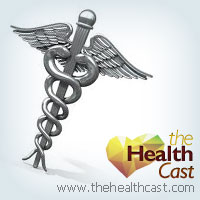
Here are some of the latest health and medical news developments, compiled by the editors of HealthDay:
U.S. Plans Overhaul of Government-Funded Child Care Centers
Improved safety standards may be on the way at the nation’s 500,000 federally funded child care centers, according to a new proposal released Thursday by the U.S. Department of Health and Human Services.
According to the Associated Press, about 1.6 million U.S. children attend these types of facilities, paid for by government vouchers supplied to families. Yet health and safety requirements for such centers can vary greatly because they are overseen by rules set by each state.
That means that “too many children remain in settings that do not meet minimum standards of health and safety,” Health and Human Services Secretary Kathleen Sebelius said in a statement.
She said the proposed new rules set by the federal government would “ensure that providers take necessary basic steps to shield children from an avoidable tragedy.”
Among the proposed changes, according to the AP:
- Workers would be required to undergo fingerprinting and background checks, as well as training in first aid, CPR, poison prevention and safe sleeping practices for babies.
- Rules for the safe transport of children, to cut the number of deaths among children left in cars.
- Unannounced, in-person child care site visits by state inspectors.
- Online posting, in plain language, of each child care facility’s licensing and health and safety inspection records.
- Efforts to widen access to government-funded child care, especially for unemployed parents looking for work.
—–
Two Health Care Workers Made Ill by SARS-Like Virus
An emerging, SARS-like virus that has sickened 40 people in the Middle East and Europe since September has now caused illness in two health care workers who were caring for infected patients, health officials report.
Two health care staffers caring for a patient in Saudi Arabia have been sickened with the coronavirus, the first such recorded case of transmission from patient to health care worker, the Associated Press reported. Person-to-person transmission has been suspected before, the news agency said.
Coronaviruses include SARS, the infection that caused a widespread global outbreak in 2003. The new coronavirus appears to have a high fatality rate, with 20 deaths recorded among the 40 known cases.
—–
Women in Their 40s Still Getting Mammograms
Many women in their 40s are not following updated guidelines on mammograms that recommend waiting until after the age of 50 to start getting routine breast cancer screenings, new research shows.
“Patients — and likely their providers — appear hesitant to change their behavior, even in light of evidence that routine screening in younger women carries substantial risk of false positives and unnecessary further imaging and biopsies,” study author Dr. Lauren Block, a clinical fellow in the division of general internal medicine at the Johns Hopkins University School of Medicine in Baltimore, said in a statement, the UPI reported Wednesday.
“Women have been bombarded with the message ‘mammograms save lives,’ so they want them no matter what,” Block added.
In 2009, the U.S. Preventive Services Task Force looked at studies that suggested giving routine mammograms to women under 50 often ended in overdiagnosis and overtreatment, and decided to change course with its guidelines. Now, the task force recommends that women between the ages of 50 and 74 should get a mammogram every two years, while those aged 40 to 49 without a family history of breast cancer should weigh the option of getting a mammogram with their doctor.
However, after analyzing mammogram use data on more than 480,000 women that was culled from state health department records, Block and her colleagues found there was almost no change in the number of women in their 40s who got mammograms before and after the guidelines were changed, going from 53 percent before 2009 to 52 percent in 2010. Among women over 50, that percentage dropped from 65 percent to 62 percent in the same period.
The study was published online May 15 in the Journal of General Internal Medicine.

